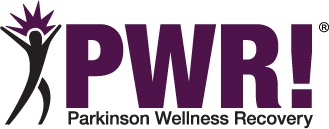PWR!Moves® Instructor Training and Certification

Translating Research and Function into the Community Setting Through Group Classes and Personal Fitness Training
Therapists and fitness professionals that specialize in the instruction of larger/faster functional movements (PWR!Moves®) in group classes and in their integration into community yoga, dance, sports and personal training sessions.
Click Each Topic For More Information
Course Description
Course Objectives
Course Schedule
Course Description
This course will provide participants with the background and unique skills to teach an evidenced based PD-specific approach in group or personal training. Participants will learn two group formats (PWR!Moves® Group or PWR!Moves Circuit). Both of these class formats can be adapted for individuals with minimal to moderate levels of disease severity. Participants will have the opportunity to participate in; develop class activities, and teach PWR!Moves classes while interacting with PWR! faculty and people with Parkinson disease during the workshop.
Participants will also be introduced to how to implement essential principles of learning and neuroplasticity founded upon research in the fields of exercise science, motor control, and motor learning. These essential principles are the “how” of what you do to achieve optimal benefit to quality of life, function, symptoms, and slowing the progression of PD. Instructors will learn to use the group structure and their feedback and instructional methods to empower and educate class participants about their true potential. Emphasis will be on promoting an environment for learning that embraces an atmosphere of empowerment, motivation, social enrichment, and FUNction! The goal for individuals with PD is to not only improve their performance in their exercise class, and learn to recognize when they need to self-correct their slow/small movements for better movement, posture and balance in everyday life.
Course Objectives
Workshop attendees will be able to:
1) Possess general knowledge about PD to include: who gets it, what causes it, major symptoms, and how it impacts FUNCTION (mobility, balance, flexibility, incoordination) in individuals with PD.
2) Describe how medications, deep brain surgery, and symptoms (nonmotor/motor) may affect an individuals’ cheap effexor xr ability to participate in, or benefit from exercise.
3) Explain the significance of targeting the training of amplitude into function (PWR!Moves) as the foundation for a PD-specific program.
4) Teach the Basic4 | PWR!Moves in different positions in a group format: floor prone/supine, all4’s, sitting, standing.
5) Be able to explain how the goals of PREPARE/ACTIVATE/FLOW target the primary symptoms of PD and include examples of each.
6) Identify how each of the Basic4 | PWR!Moves target common PD-specific problems related to flexibility, strength, coordination, balance, and posture in different positions.
7) Demonstrate how each of the PWR!Boosts can be integrated into PWR!Moves exercises and be prepared to discuss their purpose, or why they are important.
8) Able to use modeling, mental imagery, voice, cues, instruction, and reward-based feedback to achieve optimal alignment, motor output (effort), and engagement.
9) Discuss how PWR!Moves can be integrated into function/ADL/lifestyle during a class activity.
10) Significance of the ability to implement PWR!Moves across settings (therapy/community), and reinforce them in other community research exercise programming (treadmill, cycling, pole walking, yoga, boxing, dance, Tai Chi).
11) Demonstrate how PWR!Moves in different positions may be adapted for individuals with different disease severity levels or co-morbidities.
12) Integrate the PWR!Moves into a circuit format using more typical fitness equipment or approaches that require individuals to work more independently, discuss goals of that activity (PREPARE/ACTIVATE/FLOW), and demonstrate how it may be progressed in difficulty or complexity for different individuals.
13) Describe high risk for fall activities/scenarios and what you would do to reduce the risk of falls during a class (i.e., attentional strategies, cues, equipment, class organization, feedback, and modeling/mental imagery).
Course Schedule
SAMPLE AGENDA:
Day 1 ~
7:30 AM: Registration
8:00 AM: Overview – Exercise and Parkinson Disease
8:30 AM: Overview of PD
9:15 AM: Major Symptoms and Impact on Movement
9:45 AM: BREAK
[…]
1:00 PM: Basic 4 | PWR!Moves Introduction
[…]
Day 2 ~
8:00 AM: Evidence for Exercise and Neuroplasticity in Parkinson disease
8:45 AM: Overview typical PWR!Moves Circuit Format
9:15 AM: Develop PWR!Moves Circuit Station
[…]

Could you please send me a list of when your next sessions are being coordinated for group instruction classes
Upcoming classes and registrations can be found here. https://www.pwr4life.org/pwr-workshops/pwr-therapist/upcoming-pwr-therapist-workshops/
when/where are training classes?
Upcoming classes and registrations can be found here. https://www.pwr4life.org/pwr-workshops/pwr-therapist/upcoming-pwr-therapist-workshops/